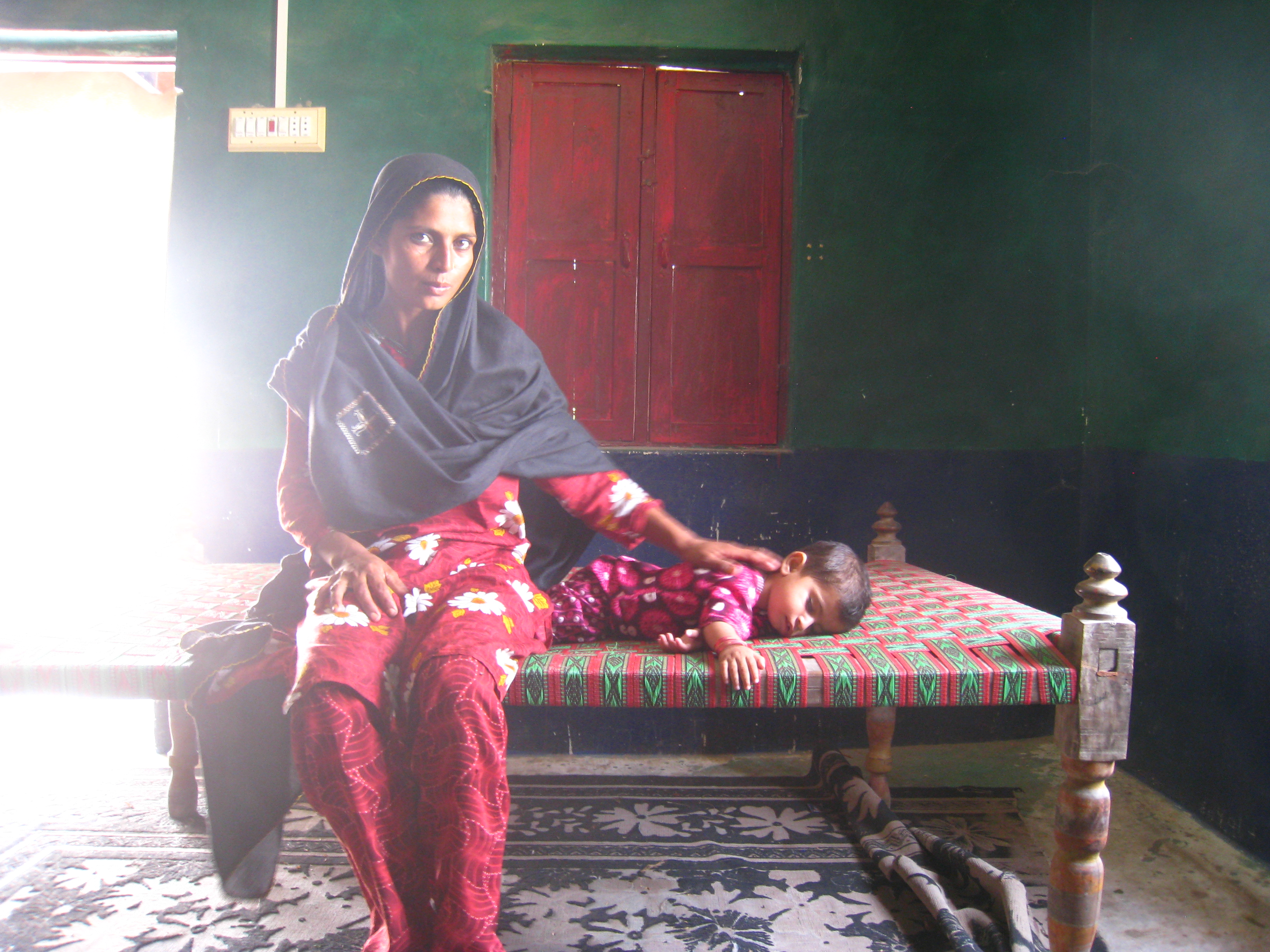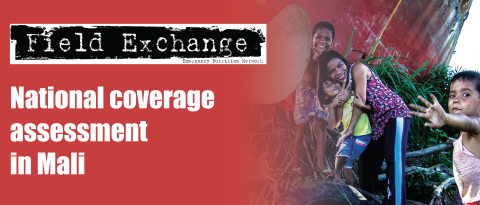Barriers to access for SAM treatment services in Pakistan and Ethiopia: a comparative qualitative analysis
Summary of research1
Location: Ethiopia and Pakistan
What we know: Community-based sensitisation can overcome lack of awareness that impedes access to SAM treatment, but is inconsistently implemented.
What this article adds: The primary demand-side barriers to accessing effective SAM treatment services faced by households were analysed, involving two cultural settings and different implementing agencies (MOH-led in Ethiopia, NGO-led in Pakistan). Barriers to access were similar in both well-functioning programmes. Common barriers related to distance, high opportunity costs, awareness of services, knowledge of malnutrition and child’s refusal of RUTF. In remote areas with less programme exposure, beneficiaries experienced barriers to remaining in the programme until their children recovered. Research on and investment in the community component of services is needed to ensure access.
Lack of community awareness is a major barrier to access to severe acute malnutrition (SAM) treatment services that can be addressed by comprehensive community-based sensitisation mechanisms. However, community elements of sensitisation, mobilisation and follow-up have not been consistently or successfully implemented when integrating community based management of acute malnutrition (CMAM) into national health systems. A recently published study supported by the Coverage Monitoring Network (CMN) presents a comparative qualitative assessment of the primary demand-side barriers to accessing two different SAM treatment services: a non-governmental organisation (NGO)-implemented service in Pakistan and a service integrated into Ministry of Health (MoH) infrastructure in Ethiopia. The study selected both programmes using two criteria: (i) one programme should be implemented by an NGO and one by the MoH, and (ii) the programmes should be considered ‘successful2’.
 Programme characteristics
Programme characteristics
Ethiopia
The programme in Ethiopia was part of the national Health Extension Programme, with services delivered by two tiers of community health worker (CHW) at basic community-level health posts and at district-level health centres. Over 30,000 salaried health extension workers (HEWs) served kebele-level health posts (two per post, 5000 population). HEWs provided SAM treatment as part of a bundle of health-related services. The Women’s Development Army (WDA) was a team of community-level volunteers within the health system, who screened children under 5 years in thirty households in their villages. Children under 2 years old were screened at monthly growth monitoring and promotion sessions and children under 5 years old at Community Health Days, held every three months. This programme was included in the analysis due to its strong level of integration within the national health system.
Pakistan
The programme in Sindh Province, Pakistan, implemented by Action Against Hunger (ACF-USA), had outpatient therapeutic programme (OTP) sites at 11out of 16 Union Councils (UC; sub-districts) within Tando Mohammed Khan and Badin districts of Sindh Province (3 OTP staff, average 35,000 population/UC). Community nutrition volunteers (literate, numerate and respected community members) screened, sensitised and followed up absentees covering a catchment area of approximately five villages (1500–2500 total population), typically 5–10 km from their homes. In each UC, OTP services were delivered from one static site and two satellite sites selected based on beneficiary location, to bring services closer to the community. This programme was included in the analysis due to its relatively high ‘period’ coverage (i.e. an estimation of coverage in a given, recent period) of 62.6%.
Methods
Data were collected in May and June 2013. Individual and group discussions were facilitated by the researcher using a translator. Focus group discussions and individual interviews were conducted with a variety of stakeholder groups including programme staff, communities (including community leaders and other community members) and households with a child who had recently attended the CMAM programme and had been classified as either recovered from SAM or defaulted (up to two barriers were recorded per beneficiary). Table 1 outlines the number of focus group discussions and individual interviews conducted with different respondent types in each country.
Table 1: Number and type of respondents per country |
||||
Respondents |
Ethiopia |
Pakistan |
||
|
Focus group discussions |
Individual interviews |
Focus group discussions |
Individual interviews |
|
|
Programme staff |
13 | 6 | ||
|
Communities |
4 | 7 | 3 | |
|
Beneficiaries Recovered Defaulted |
16 21 |
11 10 |
||
|
Non-beneficiaries |
1 | 2 | ||
Quantitative information, collected in these household visits via a short survey, included information on the child (age, gender), treatment received (clinical outcome, length of stay, other clinical care received) and household factors predicted to be associated with limiting access to services, including education and occupation of parents/caregiver, ethnicity and religion, household size, distance to programme and proxies for socio-economic status (land ownership, roof material, electricity).
Programme areas and OTP sites within them were purposively selected to capture a variety of programme environments, based on criteria including agricultural and topographical characteristics, population density, implementation duration, site specific default rates and technical support received. In Ethiopia’s Tigray Region, woredas within and bordering Central Zone (including one woreda in North-west Zone) were selected for having high variation in defaulting rates. Within each site, a minimum of ten beneficiaries were consulted. Households of children who had recovered from SAM were randomly selected where possible using registration records. Defaulter households were purposively selected in each area; efforts were made to locate all households that had defaulted, either in the past two years or since the beginning of the programme, whichever was greater. A total of twenty-one defaulters were consulted in Ethiopia and ten in Pakistan.
 Results
Results
Analysis of demand-side barriers to access produced several themes related to similarities and differences between the two programmes.
Distance (travel time) was a commonly cited barrier and could be complicated by cultural factors, topography, road quality, lack of transportation options and weather, particularly during the rainy season or extreme temperatures. The definition of how far was ‘too far’ varied – for some, 1 h was too far while for others living 3–4 h away consistently prevented regular attendance. In general, caregivers reporting this barrier cited an average distance of 2 h 20 min. In Ethiopia, perception of distance was not consistent across households. When other domestic responsibilities were very time-consuming, even a shorter walk to the programme site was considered too far. All defaulters in Ethiopia citing distance as a barrier came from a mountainous and remote rural woreda with an average walk of 3 h.
Weather posed a particular problem in the Sindh Province of Pakistan, which experiences both flooding and high temperatures. Walking to the OTP posed a challenge to both caregivers (with perceived risk to female caregivers) and the children they carried.
The ‘opportunity cost’ to the caregiver of regular attendance was often substantial, complicated by other pressing responsibilities, including harvesting fields, caring for other dependent family members, tending cattle and walking long distances to fetch water. In Ethiopia, attendance was most difficult during the harvest season, particularly for households dependent on agriculture and daily labour.
Accumulated direct and indirect costs for a child’s illness had an impact on parents’ livelihoods, particularly if inpatient care was required. Waiting at the OTP site took up to 1.5 h, particularly in Pakistan where OTP sites served a large geographic area. Community members living further away would sometimes travel in groups and share a rickshaw fare, thus adding extra costs to their visit. Defaulting was higher among the migratory Koli caste of Hindus and so varied by season. Intensive costs of inpatient treatment in Pakistan also increased the likelihood of premature programme exit.
The existence of and exposure to health infrastructure and the level of integration into this infrastructure appeared to increase awareness of, and promote access to, CMAM services in different ways. Due in part to the decentralised service provision in Ethiopia (some woreda had OTP at all health posts), and also to effective sensitisation by well-accepted and credible programme staff, beneficiaries could often attend a site close to home. In Pakistan, programme staff felt that there were certain groups of community members with limited programme awareness, including migrant workers and those living at a distance from the OTP site. In Ethiopia, community members and staff exhibited a comprehensive understanding of child health and nutrition, including the importance of breastfeeding, complementary feeding and personal/environmental hygiene. Community awareness was further enhanced through involvement of local leaders. In Pakistan, knowledge of nutrition was restricted by limited exposure to public services and to basic education. Also, there were few other public health programmes to address important local health concerns, such as immunisation and potable water. Sensitisation was a particular challenge in these areas.
In Ethiopia, nearly 30% of defaulters cited children’s refusal to consume RUTF as a barrier to continued programme adherence (some reported vomiting and diarrhoea or inability to eat a full serving) and six out of these seven cases resulted in defaulting. Several caregivers resolved RUTF refusal through their own efforts or with responsive counselling. Programme staff believed that vomiting and loss of appetite indicated an underlying illness; however, the persistence of this problem suggests that staff knowledge, actions and communications may not have cohered consistently during case management. RUTF refusal was not found to be a barrier in Pakistan.
Conclusions
Barriers to access were similar in both of these well-functioning programmes, indicating that households face similar demand-side barriers even when supply-side barriers are minimised.
Efforts to integrate SAM treatment into national health systems should not neglect the community component of health systems and dedicated funding for the community component is needed to ensure access. Further research and policy efforts should investigate feasible mechanisms effectively to reduce barriers to access and ensure equitable service delivery.
1http://www.coverage-monitoring.org/ Puett C and Guerrero S (2014). Barriers to access for severe acute malnutrition treatment services in Pakistan and Ethiopia: a comparative qualitative analysis. Public Health Nutrition. Doi:10.1017/S1368980014602444. The paper is available at:
2 Success was defined as either the extent of coverage level in a recent assessment or the extent of integration achieved within MoH infrastructure. Selecting effective programmes helped control for supply-side constraints, to enable focus on demand-side barriers to access.


